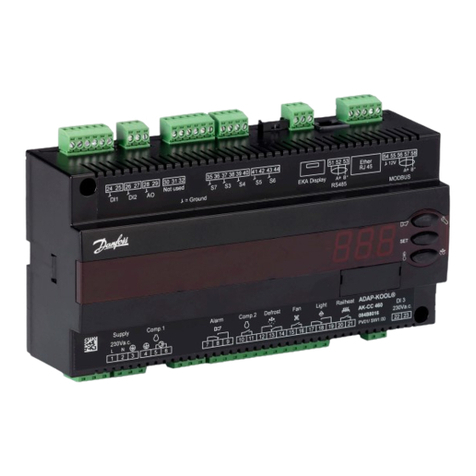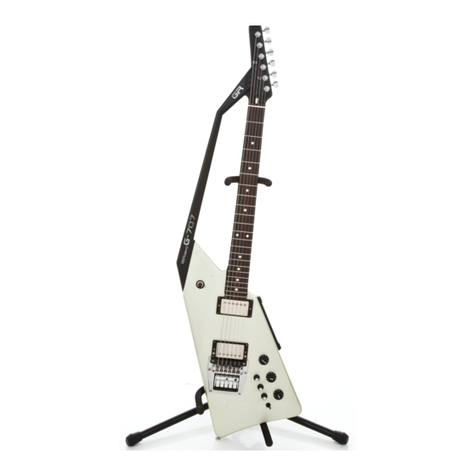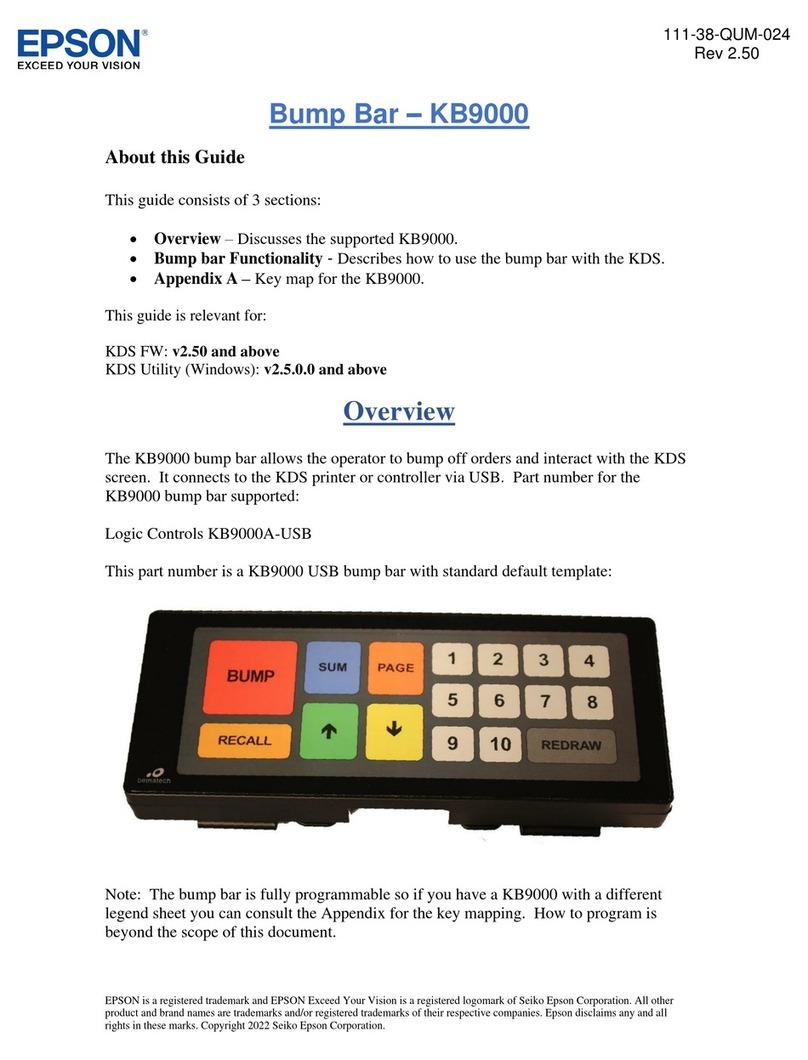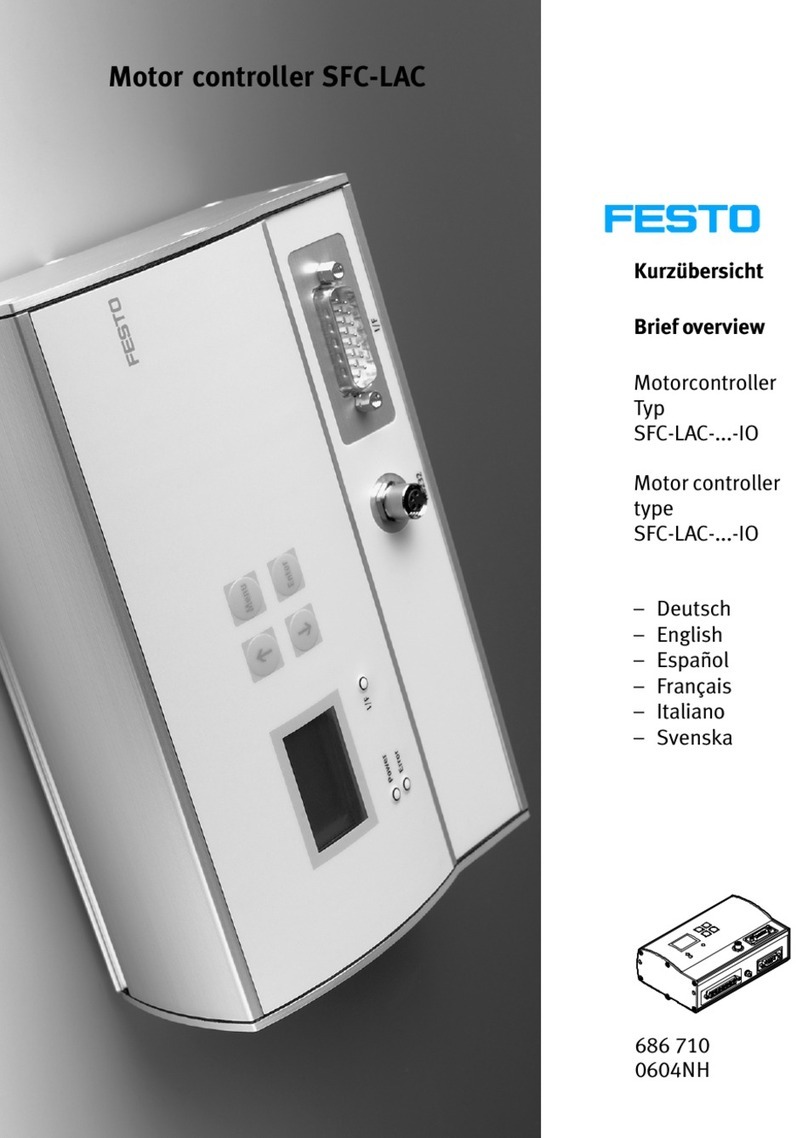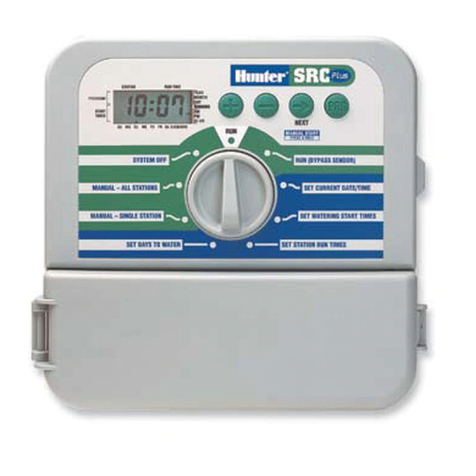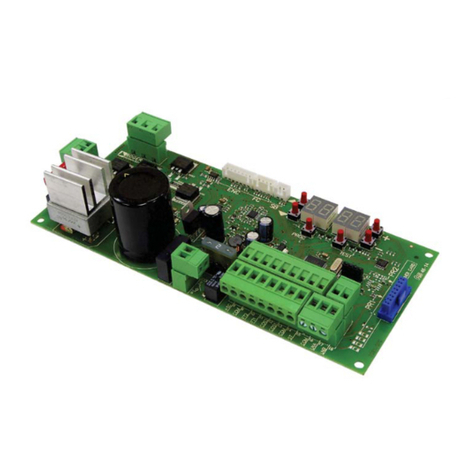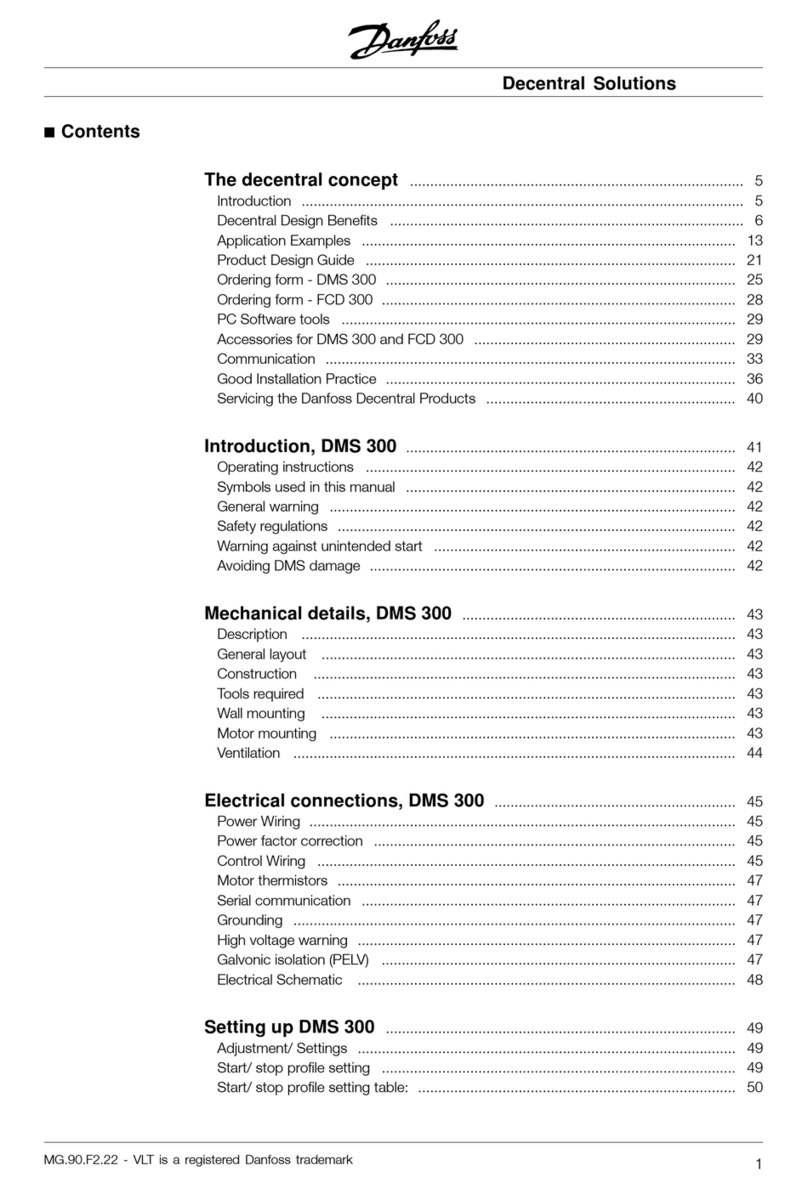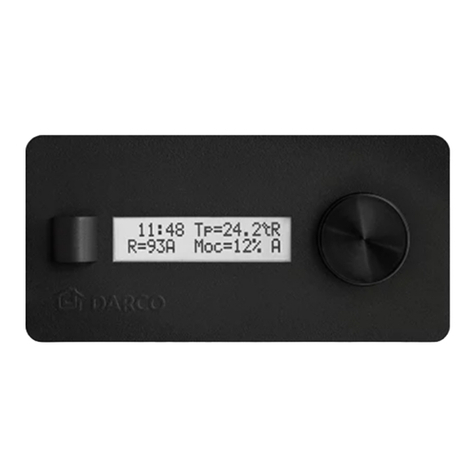Pressure Tech LF-301 SERIES Service manual

1
THE LF-301 SERIES
Operating and Service Manual
Series includes all variants of LF-301/311 and CYL-301/311
Issue B
January 2016

2
TABLE OF CONTENTS
1. Description .............................................................................................................................3
2. Installation .............................................................................................................................3
3. Operation ...............................................................................................................................4
4. Special Conditions for Safe Use .............................................................................................4
5. Hazardous Location Usage.....................................................................................................4
6. Servicing and Maintenance....................................................................................................4
6.1. Servicing the LF-301................................................................................................5
6.1.1. Accessing the Main Valve Assembly ........................................................5
6.1.2. Adjusting the Set Point ............................................................................6
6.1.3. Figure 1 –Sectional View of the LF-301...................................................7
7. Technical Data........................................................................................................................8
8. Warranty Statement ..............................................................................................................8
Annex A. LF-310/311 –‘Solid Disk’ Main Valve Design .............................................................9
A.1. Description..............................................................................................................9
A.2. Servicing..................................................................................................................9
A.2.1. Figure 2 –Detail A: LF-310/311 ‘Solid Disk’ MVA (sectional)..................9
A.2.2. Figure 3 –Exploded View of LF-310/311 ‘Solid Disk’ MVA .....................9

3
1. Description
The LF-301 provides a compact and economical solution for controlling pressures up to
180bar on low flow applications. Ideal for first stage pressure let down where basic pressure
control is required. A small piston sensing element allows low torque adjustment with a
range of springs with fine pressure adjustment. The unique soft seat design ensures
particles flow over its surface, rather than perpendicular to it, which helps minimise damage
from potential particles in the system.
Pressure Equipment Directive (PED) 2014/68/EC Declaration
This equipment is designed and manufactured in accordance with Sound Engineering
Practice (SEP) Article 4, Paragraph 3 of the directive 2014/68/EC. As such, CE marking must
not be applied. The equipment is marked under section 3.3 of Essential Safety Requirements
of the directive.
2. Installation
Before system start-up, it is recommended that all systems be pressure tested, leak tested
and purged with an inert gas such as nitrogen.
Prior to placing into service ensure that the regulator is in the fully closed position, with the
adjusting mechanism turned completely anti-clockwise.
Check the model number reference to ensure that the pressure range complies with the
installation requirements.
Visually inspect the regulator for any signs of damage or contamination. If any foreign
materials are present and cannot be removed from the regulator, or if the threads on the
regulator appear to be damaged, please contact the office immediately to arrange for the
regulator to be returned for service.
The Inlet and Outlet ports are clearly marked. Select the correct size and type of connection
fittings for these ports which are indicated in the regulators part number. Both British
Standard Pipe (BSPP) ‘B’ and National Pipe Thread (NPT) ‘N’ options are available on this
regulator. Use the correct dowty or bonded seal for BSPP connections, self centering seals
are recommended. For NPT threads, ensure that PTFE tape is applied correctly to the
fittings, applying two overlapping layers in the direction of the thread, taking care that the
tape does not come into contact with the first thread. Any gauge ports on the regulator will
be 1/4” NPT unless otherwise stated. If any gauge port is not required, ensure that the port
is plugged prior to installation.
The media supplied to the regulator must be clean. Contamination can damage the seat
which may cause the regulator to fail. Filtration suited to the application is recommended
upstream of the regulator. Should further assistance or information be required in relation
to installation of any Pressure Tech regulator please contact the office, giving reference to
the regulators part number and/or serial number.

4
3. Operation
Turning the adjusting mechanism clockwise compresses the spring, which in turn opens the
main valve and allows the inlet pressure to pass through the seat orifice until the outlet
pressure is equivalent to the loading forces set by the compressed spring. Increase the
outlet pressure in this way until the desired pressure is achieved.
To reduce the outlet pressure, the adjusting mechanism should be turned anti-clockwise
whilst the media is flowing, or whist venting downstream of the regulator.
The desired outlet pressure should be set whilst increasing the pressure. Do not exceed the
maximum inlet and outlet pressures of the regulator which are indicated on the regulator
label.
4. Special Conditions for Safe Use
The LF-301 series are non-venting type regulators, therefore the outlet pressure shall be
reduced by venting downstream of the regulator whilst simultaneously turning the adjusting
mechanism anti-clockwise.
5. Hazardous Location Usage
This equipment has not been manufactured specifically for use in potentially explosive
atmospheres and as such an ignition hazard assessment has not been carried out on this
product. If the user should wish to use this product in such an environment where there
may be a potentially explosive atmosphere then it is the responsibility of the user to
conduct an ignition hazard assessment against 99/92/EC.
6. Servicing and Maintenance
Servicing and maintenance work on the LF-301 regulators should only be performed after
fully reading and understanding the Operating and Servicing Manual. Due to the typical
nature of the gases the regulator can be used with, the operator should not endanger
himself/herself or others by working on this regulator without prior knowledge on the
Health and Safety concerns relating to handling of technical gases. Any uncertainty should
be clarified with Pressure Tech before working on the regulator.
Pressure Tech Ltd recommends the use of Krytox GPL 205 during servicing.
Prior to commencing service, please ensure that:
-The equipment has been de-pressurised
-The load spring has been de-compressed by turning the adjusting mechanism fully
anti-clockwise
-Applications involving toxic, flammable or corrosive media have been fully purged

5
To ensure the best possible results from servicing, when re-assembling the regulator and
any assemblies within it, ensure that all areas of the components and the regulator body are
cleaned and free from contaminants which may result in failure of the regulator.
6.1. Servicing the LF-301
*Note: fig 1 should be used as a reference for the following set of instructions
6.1.1. Accessing the Main Valve Assembly
To access the Main Valve Assembly (MVA):
i. With the flats of the Regulator Body (1) secured in a vice, loosen and remove the
Bonnet (15) using a 47mm wrench ensuring that the Hand Wheel (17) is fully
wound anti clock wise (*Ref. 6.1.2)
ii. Remove the 10mm Ball Bearing (9), Upper Spring Rest (8) and Load Spring (24)
iii. Using needle nosed pliers, remove the Lower Spring Rest (5), then remove the
Sensor Assembly (6, 7)
iv. The Seat Nut (4) can then be removed using a 12mm socket
v. Remove the Main Valve (2, 21) and Main Valve Spring (3) from the assembly
vi. Visually inspect the seat nut and soft seat (7) for damage under a microscope
vii. Replace the Main Valve Spring (3) and Main Valve (2, 21) and place into the
Regulator Body (1)
viii. Replace Seat Nut (4) fitted with new 5x1 mm O-ring (18) taking care not to
damage its sealing face against the tip of the valve
ix. Replace the O-rings (13, 14, 15, 17) around the Sensor (7) and Sensor Holder (6)
x. Position the Sensor (7) into the Sensor Holder (6) and then place the assembly
into the Regulator Body (1)
xi. Replace the O-ring (16) around the Lower Spring Rest (5) and then place into the
Sensor Holder (6)
xii. Position the Load Spring (24) around the Lower Spring Rest (5) and place the
Upper Spring Rest (8) and 10mm Ball Bearing (9) to the assembly
xiii. Screw the Bonnet (10) onto the assembly and using a torque wrench with a
47mm open ended attachment, tighten to 90Nm
It is recommended that all parts in the repair kits are used. Any defect parts removed during
the service should be disposed of. Parts should be kept clean in line with media
requirements. Following re-assembly of the regulator, pressure tests should be made to
both the inlet and outlet side of the regulator, to ensure there is no internal or external
leakage across the regulator.
To ensure that the main valve assembly has been correctly and effectively installed it may
be required to perform the appropriate seat leak test as per ANSI/FCI 70-2.

6
6.1.2. Adjusting the Set Point
It is not recommended (or necessary) to remove the Hand Wheel during service as this will
affect the set point of the regulator. Should it be required to adjust the set point please
follow the instructions below:
i. Remove the Nameplate (22) and Cap from the Hand Wheel (23) and loosen the
Lock Nut (12) such that the Hand Wheel is able to spin freely on the Adjusting
Screw (11)
ii. Connect the correct fittings to the Inlet and Outlet ports of the regulator. Ensure
that any gauge ports are plugged or that the correct gauge is fitted
iii. With the Regulator Body (1) secured in a vice apply the Maximum Working
Pressure (MWP) to the Inlet of the regulator
iv. Connect the Outlet port to a calibrated pressure test gauge appropriate to the
required set pressure. As the regulator is non-venting, ensure that a ball/needle
valve is fitted to allow pressure to be relieved downstream of the regulator
v. Using a slotted screwdriver, turn the Adjusting Screw (11) clockwise until the
desired set point has been reached
vi. Ensure repeatability by allowing flow through the regulator using the ball/needle
valve
vii. With the outlet pressure set, screw the first Lock Nut (12) to the base of the
Adjusting Screw (11) against the Bonnet (10)
viii. Position the Hand Wheel (23) onto the Lock Nut (12). Ensure that the Lock Nut
and Hand Wheel become engaged
ix. Fasten the second Lock Nut (12) against the Hand Wheel (23) and gently begin to
tighten using a 13mm socket until it begins to secure itself
x. At this point, whilst holding the Hand Wheel (23) continue to tighten whilst
simultaneously turning slightly anti-clockwise to prevent it from locking against
the Bonnet (10)
xi. Ensure that the Lock Nut (12) is sufficiently tightened, taking care not to adjust
the set point
xii. Turning of the Hand Wheel (23) should now also turn the Adjusting Screw (11)
which will control the pressure
xiii. Turn the Hand Wheel clockwise until it reaches its set point and check to make
sure that the desired outlet pressure is correct.
xiv. If the set point is not correct, repeat steps v. to xiii.
xv. Reduce the pressure downstream by venting the pressure through ball/needle
valve and then turning the Hand Wheel anti-clockwise until the regulator closes
xvi. The Cap and Nameplate (22) can now be placed into the Hand Wheel (23).
Ensure that the information stated on the Nameplate is in accordance with the
set pressure of the regulator

7
6.1.3. Figure 1 –Sectional View of the LF-301
© Copyright of Pressure Tech Ltd
PARTS LIST
ITEM
PART NUMBER
DESCRIPTION
1
PT-301-X-SS
LF-301 Body ¼” NPT
2
PT-C-001-013
MAIN VALVE
3
PT-C-006-002
MAIN VALVE SPRING
4
PT-C-007-002
SEAT Cv 0.06
5
PT-C-018-006
LOWER SPRING REST
6
PT-C-105-001
8mm SENSOR HOLDER
7
PT-C-106
8mm SENSOR
8
PT-C-017
UPPER SPRING REST
9
BALL-010-SS-316
10mm BALL BEARING
10
PT-C-015
BONNET
11
PT-C-019-003
ADJUSTING SCREW
12
PT-C-020
LOCK NUT
13
PT-C-104
PTFE BACK UP RING
14
PT-C-176
PTFE BACK UP RING
15
OR-BS008
O-RING STD
16
OR-0171-16
O-RING STD
17
OR-0190-20
O-RING STD
18
OR-0050-10
O-RING STD
19
CIR-BS3673/1-B010M
CIRCLIP
20
FILT-SCRM31040405-A
10mm SCREEN FILTER
21
PT-C-002-XXX
SOFT SEAT
22
PT-C-022
NAMEPLATE
23
PT-C-021
SMALL HAND WHEEL
24
PT-C-011-XXX
LOAD SPRING

8
7. Technical Data
Fluid Media: All gases and liquids compatible with materials of
construction
Max Inlet Pressure*: 300 bar (4350 Psi) (with PEEK Seat)
210 bar (3000 Psi) (with PCTFE Seat)
Outlet Pressure Range: 0-180 bar
Operating Temperature: -20°C to +80°C
Materials: Body and Trim: 316 SS
Seat: PCTFE / PEEK® / PTFE / FEP
Flow Capacity (Cv): 0.06 (also available in 0.03 and 0.15)
Leakage: Gas: Bubble tight
Liquid: Zero drops of water at max inlet
*Max Inlet Pressure determined by seat material and Cv of regulator.
8. Warranty Statement
Pressure Tech Ltd guarantee all products correspond with their specification at the time of
delivery and, with exception to wear and tear, wilful damage, negligence, and abnormal
working conditions, will be free from defects for a period of 12 months from date of
delivery.

9
Annex A. LF-310/311 –‘Solid Disk’ Main Valve Design
A.1. Description
The ‘solid disk’ type main valve assembly was introduced as an alternative to the unique
‘cone type’ assembly and could be applied where greater resistance to both temperature
and pressure were required. The new disk design allows for a wider range of seat material
options as well as increased Cv and Pressure combinations.
The model number ‘LF-310/311’ was assigned to denote the requirement for the new disk
type main valve arrangement. The LF-310/311 ‘solid disk’ option allows for a Maximum
Working Pressure of 300 Bar (4350 Psi) or 414 bar (6000 Psi) when fitted with a PEEK seat.
The LF-310 is capable of accurately controlling pressures of up to 35 bar (510 Psi).
A.2. Servicing
The servicing of the LF-311 regulator should be performed in line with the service
instructions for the LF-301 as defined in Section 6 of this manual, taking account for the
difference in valve assembly. The figures below detail the alternate main valve assembly for
reference purposes only.
A.2.1. Figure 2 –Detail A: LF-310/311 ‘Solid Disk’ MVA (sectional)
A.2.2. Figure 3 –Exploded View of LF-310/311 ‘Solid Disk’ MVA
Table of contents
Other Pressure Tech Controllers manuals

Pressure Tech
Pressure Tech LF-792 Series Service manual
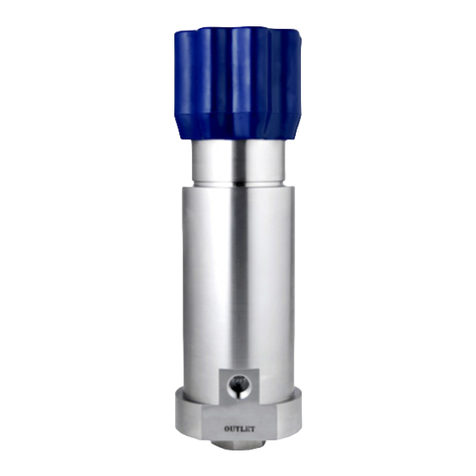
Pressure Tech
Pressure Tech LF-690 Service manual
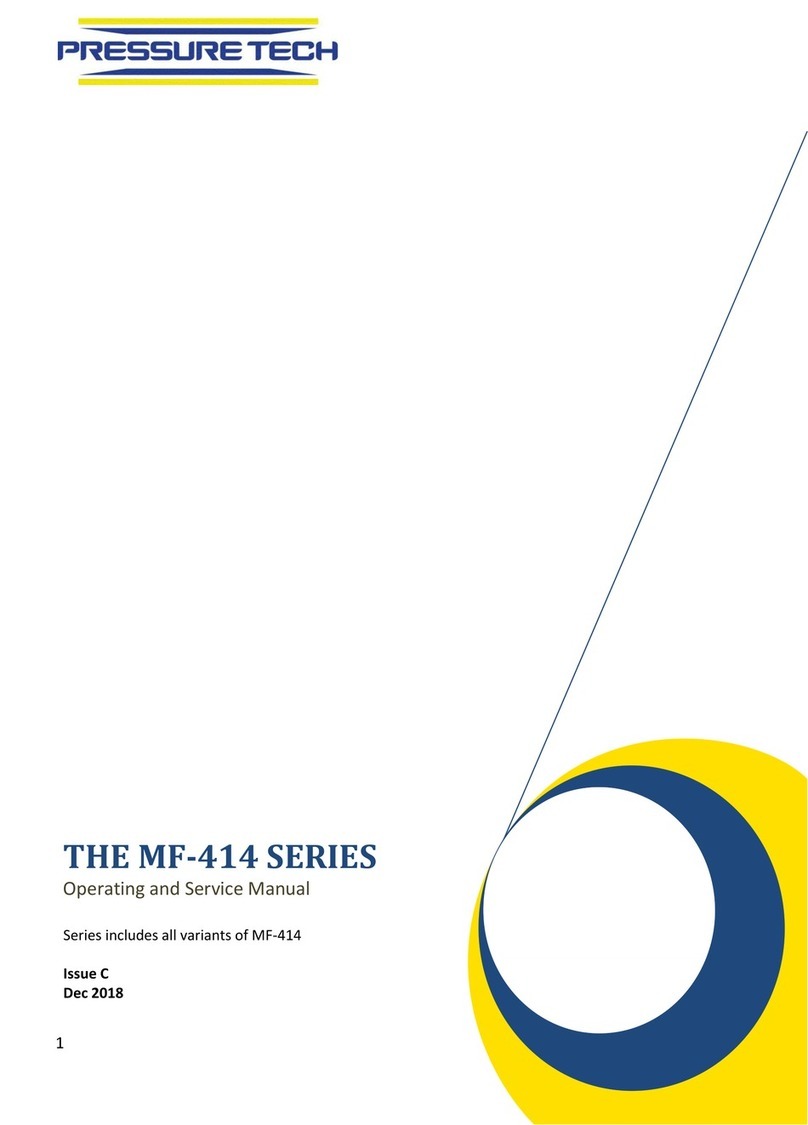
Pressure Tech
Pressure Tech MF-414 Series Service manual

Pressure Tech
Pressure Tech THE SS-414 Series Service manual
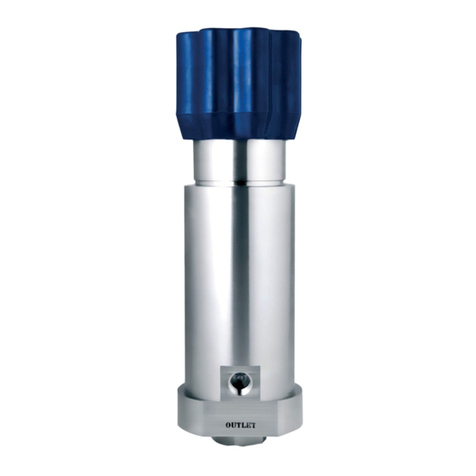
Pressure Tech
Pressure Tech LF-540 Series Service manual
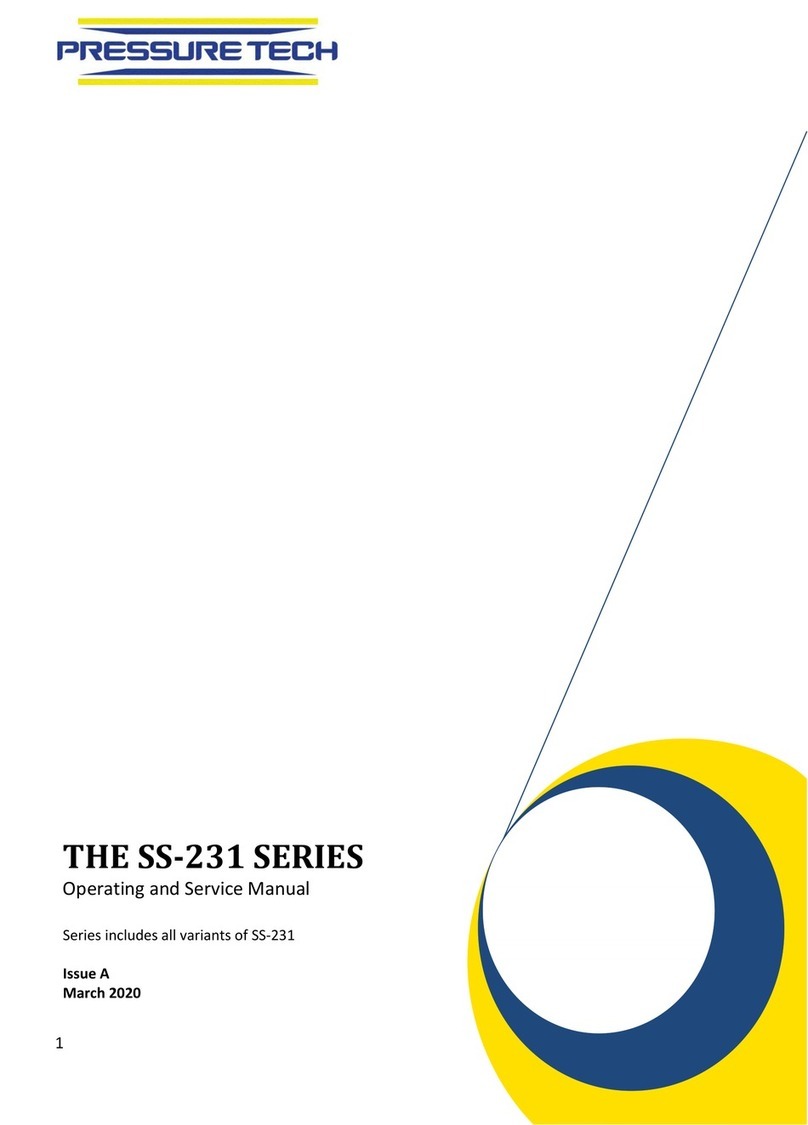
Pressure Tech
Pressure Tech SS-231 Series Service manual
Popular Controllers manuals by other brands

Sony
Sony PS4 DUALSHOCK 4 instruction manual
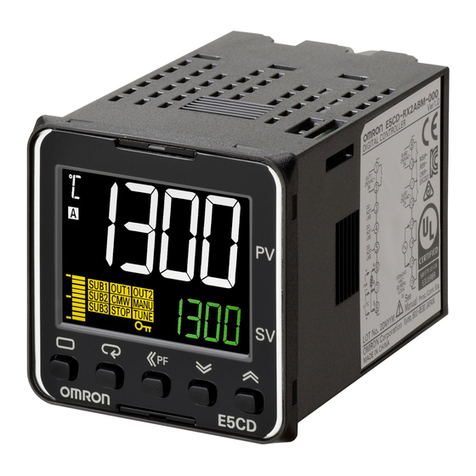
Omron
Omron E5CD instruction manual
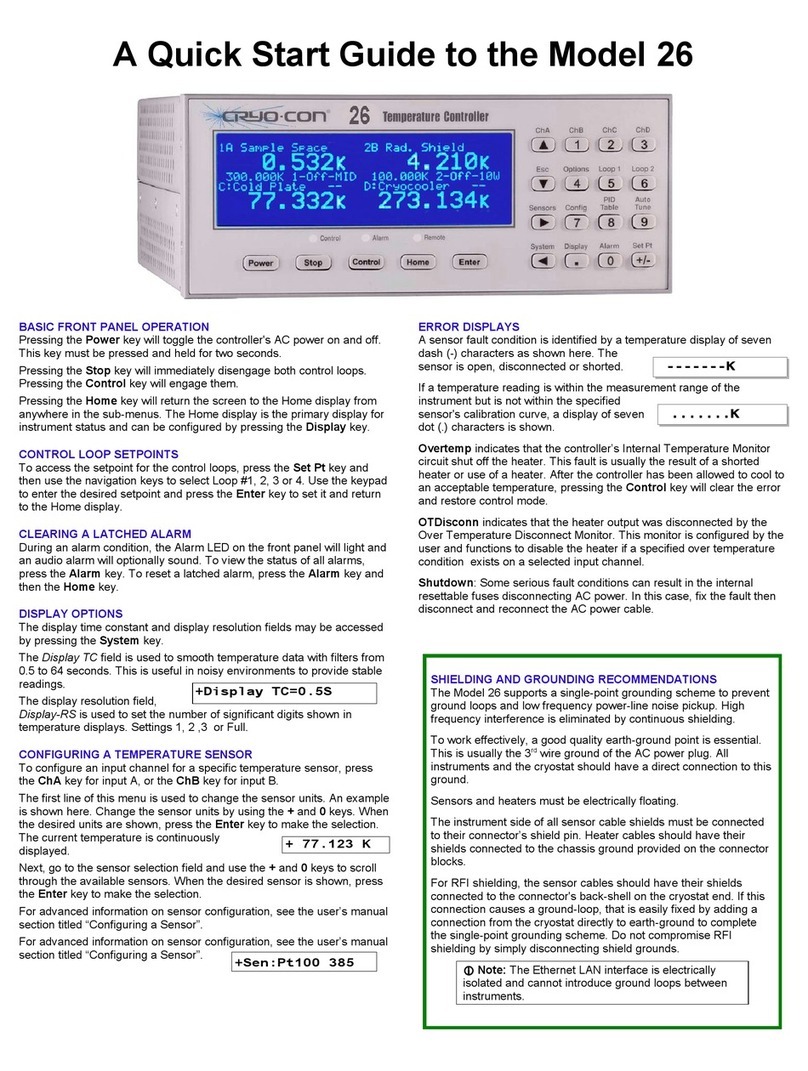
Cryo-con
Cryo-con 26 quick start guide
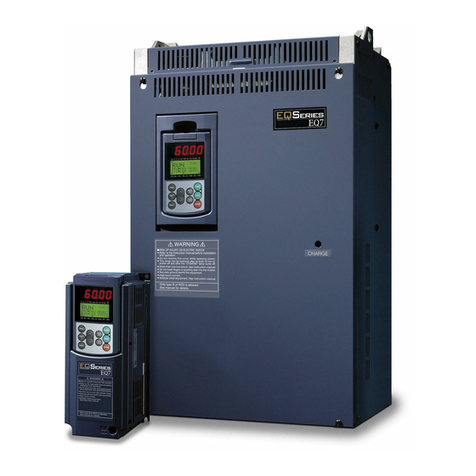
TECO-Westinghouse
TECO-Westinghouse EQ7 Series instruction manual
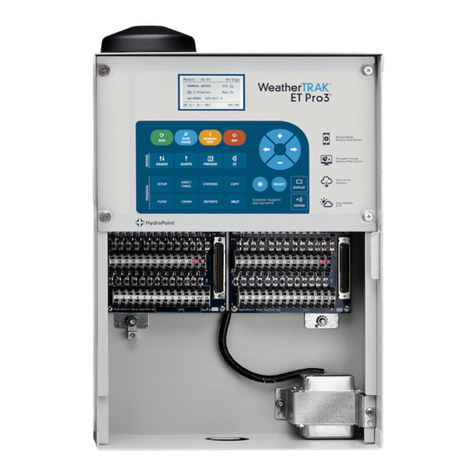
HydroPoint
HydroPoint WeatherTRAK ET Pro2 SWM Upgrade Installation Guide
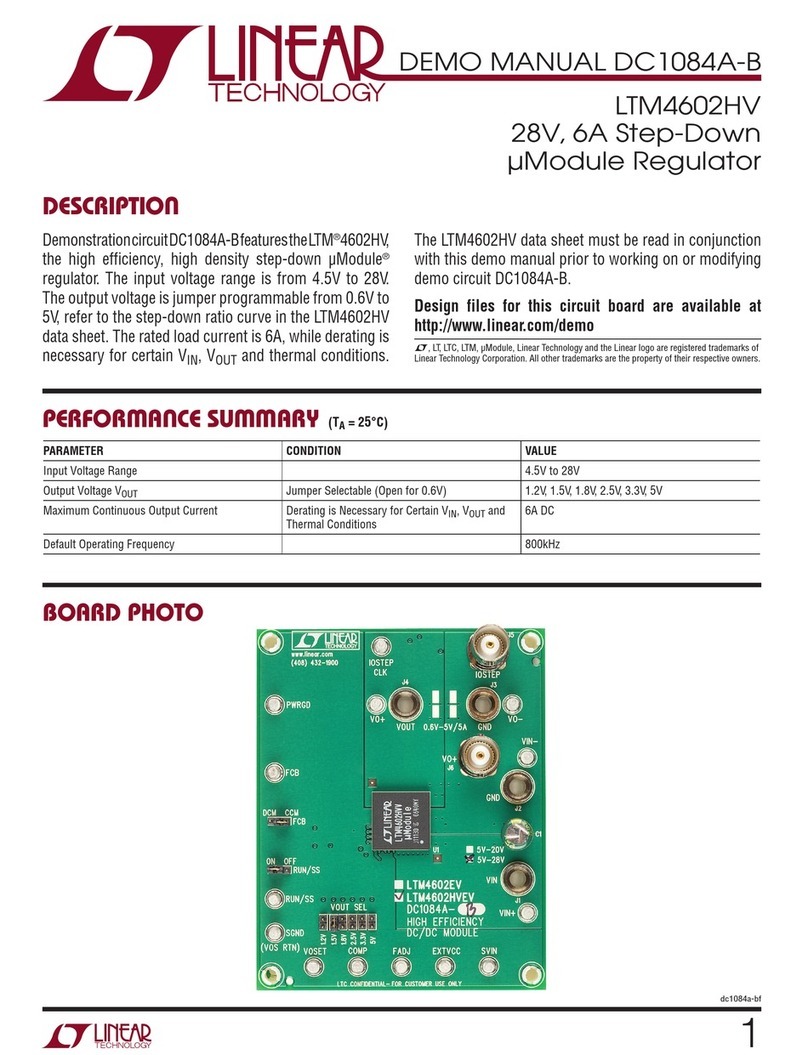
Linear Technology
Linear Technology DC1084A-B manual

